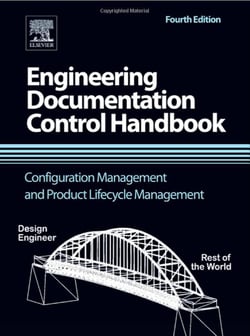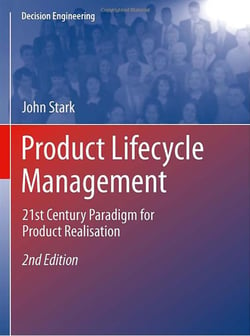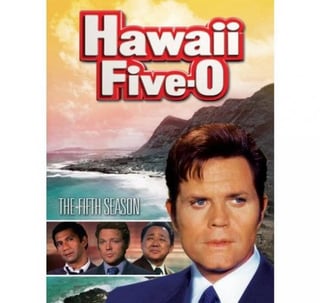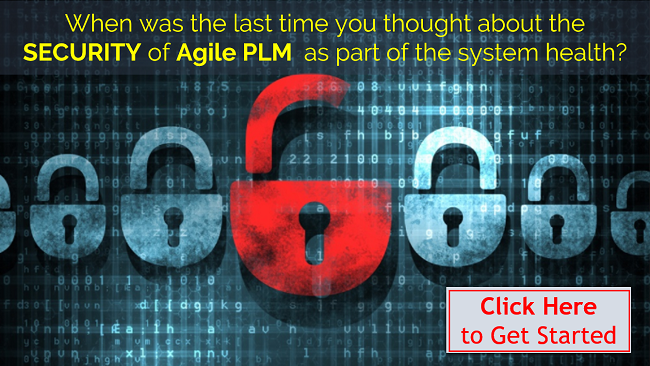Welcome to this week’s TBT post. Since everyone at the office is reading a new
book, I think this post – a review of reference books for PLM – is a good fit.
A recent TV commercial reminded me of my childhood and watching Hawaii Five-O. So, when a conversation on LinkedIn asked me what books I have read on Product Lifecycle Management (PLM), I couldn't help but think of Steve McGarrett's famous phrase, "Book 'em Danno". The person who started the discussion thread apparently puts great faith in the written word and was curious as to what resources I and others use to educate ourselves on PLM. I must admit since I have been involved in PDM and PLM for over 20 years and work with various PLM technologies on a daily basis, cracking a book on the subject doesn't sound extremely exciting to me. However, I am an avid reader and do understand the value of a well written book, so I decided to do a little research and see what reference material for PLM is available in book form. This blog will discuss a couple of books that I've found and hopefully encourage my readers to share their own resources for learning about PLM and best practices.
The obvious place to go to look for books on PLM is Amazon so that is where I started. I was surprised to see 4 pages of results. I think this is a good indicator that PLM is starting to become a more mainstream technology. As I looked through the list of books, I realized, in general, only the first two pages were really relevant to PLM. This is fairly typical for search results but we still have several books that look viable beyond the first pages. I also want to give special attention to the book the LinkedIn discussion owner referenced.  The book is titled the Engineering Documentation Control Handbook, by Frank B. Watts. Mr. Watts seems to have an extensive background in engineering and has been teaching on the subject at the University of Illinois, so I definitely think he has some experience and credibility on the subject of controlling engineering documentation. Looking through the table of contents, it definitely seems like there is a lot of useful information here. The one concern I have about this book and others on topics like this is their typically dated information. The problem in general with books on topics like PLM and configuration management is that often, by the time the material is published, the industry and technology have passed them by and rendered the information obsolete. This book seems to have some good fundamental principles for controlling engineering data but has no reference to any current technologies available for automating this process. I think a book like this is very valuable for helping someone understand the basic principles of change management but it needs to be read with a grain of salt considering the advances that have been made with product lifecycle management tools. If you attempt to just transfer manual processes to PLM, you miss the point and the value of adopting PLM. However, if you do not understand the basic principle of document control and change management you may also struggle to have a successful PLM system.
The book is titled the Engineering Documentation Control Handbook, by Frank B. Watts. Mr. Watts seems to have an extensive background in engineering and has been teaching on the subject at the University of Illinois, so I definitely think he has some experience and credibility on the subject of controlling engineering documentation. Looking through the table of contents, it definitely seems like there is a lot of useful information here. The one concern I have about this book and others on topics like this is their typically dated information. The problem in general with books on topics like PLM and configuration management is that often, by the time the material is published, the industry and technology have passed them by and rendered the information obsolete. This book seems to have some good fundamental principles for controlling engineering data but has no reference to any current technologies available for automating this process. I think a book like this is very valuable for helping someone understand the basic principles of change management but it needs to be read with a grain of salt considering the advances that have been made with product lifecycle management tools. If you attempt to just transfer manual processes to PLM, you miss the point and the value of adopting PLM. However, if you do not understand the basic principle of document control and change management you may also struggle to have a successful PLM system.
 The next book that caught my eye was Product Lifecycle Management: 21st century Paradigm for Product Realisation, by John Stark. Stark is a pioneer in the PDM and PLM industry and has been publishing newsletters and articles for over two decades, so I consider him extremely well qualified to discuss the topic. In reviewing this book, much of it seems to be oriented at justifying the purchase of PLM and PDM which could be useful for those trying to convince management to invest in the technology. It also includes examples of successful PDM implementations but none for PLM (hope that is not an indicator of his opinion of PLM). This looks like a very interesting book with useful information but it seems like it might also have a lot of fluff to get through as well. If you were looking to spin up on PLM, I think this would be a great place to start. It seems vendor and technology neutral and covers both PLM and PDM.
The next book that caught my eye was Product Lifecycle Management: 21st century Paradigm for Product Realisation, by John Stark. Stark is a pioneer in the PDM and PLM industry and has been publishing newsletters and articles for over two decades, so I consider him extremely well qualified to discuss the topic. In reviewing this book, much of it seems to be oriented at justifying the purchase of PLM and PDM which could be useful for those trying to convince management to invest in the technology. It also includes examples of successful PDM implementations but none for PLM (hope that is not an indicator of his opinion of PLM). This looks like a very interesting book with useful information but it seems like it might also have a lot of fluff to get through as well. If you were looking to spin up on PLM, I think this would be a great place to start. It seems vendor and technology neutral and covers both PLM and PDM.
There were several other interesting books on the list but since I am writing a blog and not a white paper or a book myself, I guess I will need to limit myself to these two. The key when looking for PLM reference material is that best practices are really general guidelines. Each company presents a somewhat unique situation where you can apply principles but you also need to be open to variations. I am always leery of any publication that deals in absolutes when it comes to product development process. Ultimately, the best process is the one that is most effective for your organization and this is based on people, types of products, technology and a multitude of other factors. Trying to blindly implement a standardized system or process across the board will not result in optimal performance. You must balance these things for optimal results. A good consultant or internal expert on PLM recognizes that the technology is a means to an end and that technology and process must be adjusted for the organization. Please feel free to chime in with some of your helpful resources when it comes to PDM and PLM. Here is the Amazon link if you want to see some of the other books.
[Edit: re-post from 2011]



